A Busy CALMAC Ferry Port
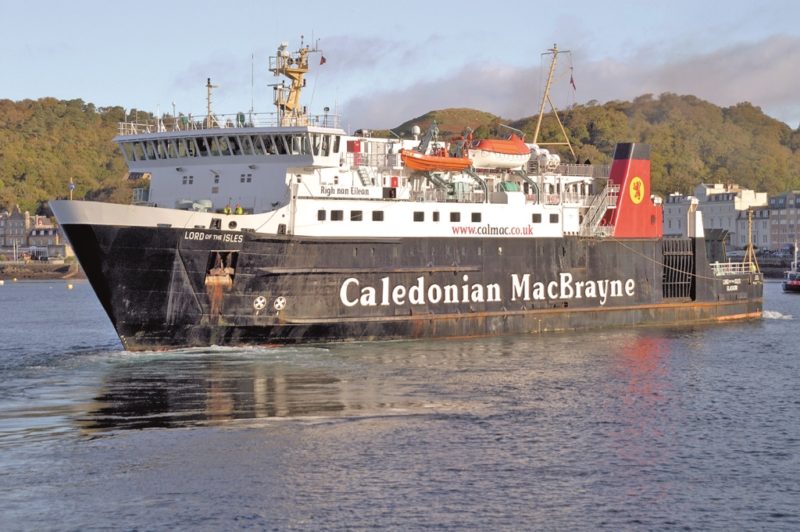
Oban is one of the four busiest ports in the comprehensive CALMAC network of routes serving all parts of Western Scotland, as shown by the figures published by the company for 2019 as follows:-
ROUTE PAX CARS FREIGHT/COACHES
Oban/All Islands 820,022 203,842 12,868
Ardrossan/Brodick 849,519 207,738 9,390
Wemyss Bay/Rothesay 727,098 198,167 9,241
Largs/Cumbrae 788,819 178,927 4,122
The figures for Oban to all of the Western islands had increased in the ten year period from 2009 by 12% for passengers, 28% for cars, and 12% for freight vehicles and coaches.
CALMAC has the large ferries Isle of Mull, Isle of Lewis and Clansman regularly sailing and arriving at the CALMAC Ferry Terminal, while the smaller Coruisk, Loch Striven and Carvoria can also be seen on their routes into Oban Bay. Oban is one of the busiest CALMAC ports, and in January 2020 the port operator CMAL (Caledonian Maritime Assets Ltd.) conducted planned maintenance works of replacing the lifting cylinders of both linkspans, each linkspan being closed for ten days. The absence for six weeks during April and May of 2021 of Loch Seaforth, built in Germany in 2014 and which entered service in mid February 2015, due to engine trouble on her Ullapool to Stornoway route, caused some of the larger CALMAC ferries to be moved from Oban to cover for her absence.
CALMAC today from Oban serves Castlebay on Barra, Arinagour on Coll, Scalasaig on Colonsay, Craignure on Mull, Kennacraig on Loch Tarbert for connecting ferries to Islay and Jura, Achnacroish on Lismore, Lochboisdale on South Uist, Mallaig, Port Askaig on Islay, and Scarinish on Tiree. Kerrara is served by the small port of Gallanach to the south of Oban crossing the Sound of Kerrara to reach Balliemore on Kerrara.
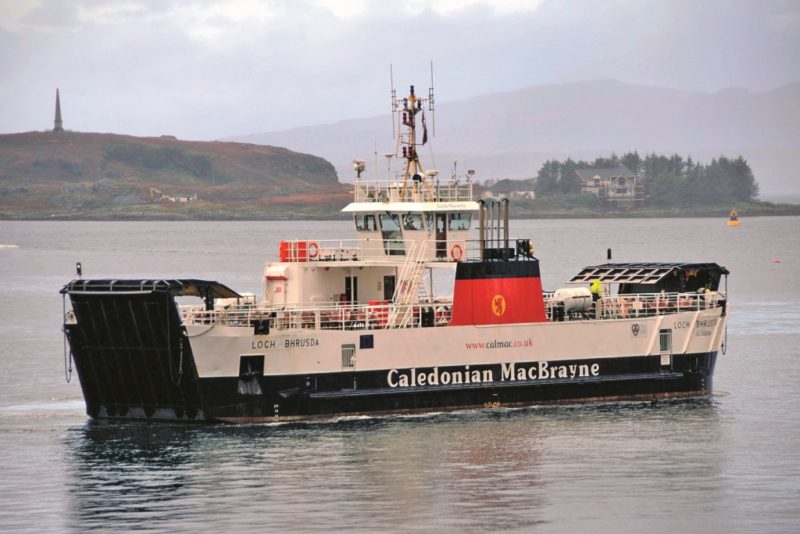
HISTORY OF OBAN
Oban was developed in the 19th century as a seaside resort, and is built around a small rocky harbour, protected from blustery westerly winds by the island of Kerrara. Rail, road and CALMAC ferry connections make it the main point of access for the North of Scotland and the Western Isles of the Inner and Outer Hebrides. The Victorian atmosphere of the town is emphasised by the twenty large baronial hotels of Victorian design that line the shore, and by the popular and frequent ferry trips to these islands. The pioneering spirit that developed this seaside resort is epitomised by McCaig’s Tower, a huge circular Victorian greystone folly built on a hill overlooking the town.
When I visit Oban, the climb up to McCaig’s Tower is the first thing I do to obtain the best view to the hills of Kerrara and those of Mull in the distance above Kerrara. The folly was planned as a replica of the Coliseum in Rome as an answer to local unemployment in the late 19th century by local banker John McCaig at a cost of £5,000, but was never completed. The town local population were relieved that it was never completed, as the plan was to place carved busts of his prominent ancestors in the gaps of the tower and looking out to sea. Oban is a typical Scottish resort, self sufficient and solid, yet having a touch of the romantic. A small local fishing fleet, a tweed mill for woollens and tartans, a distillery and a glassworks, together with large numbers of summer visitors staying at the many hotels make up the economy of the town.
Cave dwellers lived in the Oban area in Mesolithic times, and Dunollie Castle overlooking the entrance to the bay was fortified during the Bronze Age. During the 18th century there were only a few houses on the shore, with their inhabitants making a living from fishing, farming, trading, shipbuilding and quarrying. The Renfrew Trading Company established a store in 1714, although a Customs House was not necessary until 1736, when the herring drifters began to land big catches. In 1773, Dr. Samuel Johnson (1709-1784) and his biographer James Boswell (1740-1795) visited the town, and wrote in their diaries of the beauty of the town while enroute to their tour of the Highlands. Sir Walter Scott (1771-1832) visited the town in 1814, and his popular romantic masterpiece entitled ‘Lord of the Isles’ was written that year and published in 1815. The ‘Lord of the Isles’ is a narrative poem in six cantos with substantial notes set during the period 1307-1314 and the return of Robert the Bruce from exile in Ireland, to the successful culmination of his struggle to secure Scottish independence from English control at the decisive Battle of Bannockburn in 1314. It is also the name of a current CALMAC ferry.
Kerrara is a small island close to Oban and only four miles in length and almost two miles wide, and is separated from the Mainland by the Sound of Kerrara to make Oban Bay one of the safest and best harbours in Scotland. The island is known for the ruined Gylen Castle in the south, probably built by Highland chieftains after the expulsion of the Norsemen. It was destroyed in 1647 during the English Civil Wars when the MacDougall clan of Dunollie Castle held it for the King of England, and a small tower house replaced it when built in 1852. An obelisk known as Hutchesons Memorial, the predecessor of David MacBrayne, is in the north of the island. Alexander II, King of Scotland, died here in 1249 while advancing against Western Isles insurgents and his body was taken to Melrose Abbey for burial, while the Nordic Vikings still held sway and controlled the Outer Hebrides, Orkney and Shetland. King Haakon of Norway took shelter in Horseshoe Bay on Kerrara with his fleet of galleys while on his way to a decisive defeat at the Battle of Largs in 1263 at the hands of Alexander III of Scotland. There are low hills on Kerrara with the highest point being Carn Breugach at 620 feet.
The population of Oban in 1850 was only 1,500 souls, and it was only the arrival of MacBrayne steamers in 1851 that the town began to grow in importance. The arrival of the railway in 1880, and the improvement in the road to the south at the Pass of Melford, allowed the town population to grow as a popular resort for holiday makers. The weekly Oban Times started publishing in 1861 as the leading paper of the West Highlands. Victorian private steam yachts rode at anchor in the bay in the 1880s, with the Royal Highland Yacht Club instituted in 1881. The West Highland Yachting Week is held at Oban in early August, and the Oban Highland Games in mid September along with the Argyllshire Highland Gathering during the same week. This month sees Oban at its very busiest with tens of thousands of visitors flocking to the town.
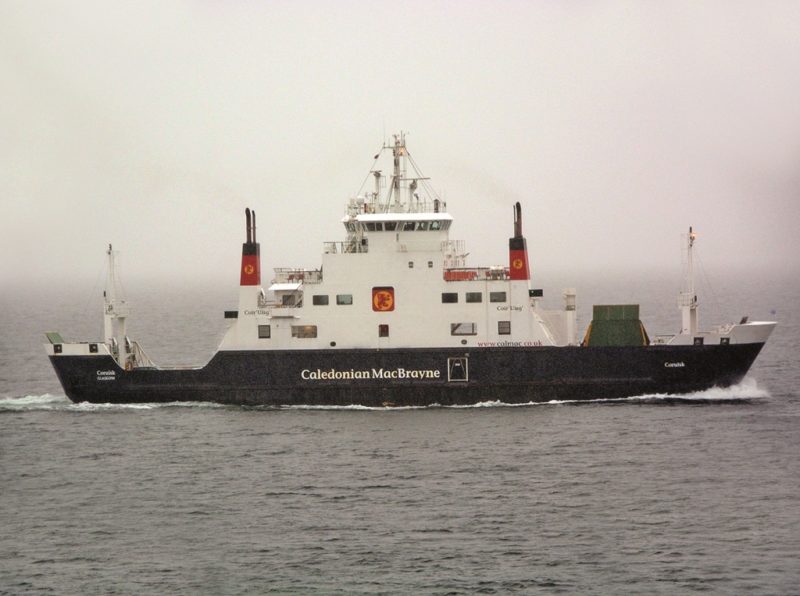
In 1897, the MacBrayne steamer handbook advertised routes from Oban to almost twenty destinations, a far cry from the CALMAC network of today. Six ports on Mull at Portree, Broadford, Armadale, Isle Ornsay, Dunvegan and Kyleakin, as well as Islay, Iona, Staffa, Mull, Coll, Tiree, Lochboisdale on South Uist, Tarbert on Harris, Tarbert on Loch Fyne, Ardrishaig, Gairloch, Ullapool, Stornoway, and Inverness on the ‘Royal Route’. The paddle steamer Cavalier of 369 grt sailed from Glasgow at 1300 hours on Mondays and arrived at the quayside at Inverness at 1600 hours on Wednesdays. The paddle steamer Fusilier of 281 grt carried passengers from Oban to Ballachulish on Loch Linnhe, Fort Augustus on Loch Ness and Inverness for a return First Class ticket of 33 shillings and a steerage return ticket of 16 shillings, sailing from Oban at 0600 hours each day and arriving at Inverness at 1730 hours. Mull is only served today by the Oban to Craignure ferry, with Tobermory having a connection to the Mainland at Kilchoan, and also Fishnish to Lochaline on the Mainland, and by Fionnphort on Mull to Baile Mor and the famous abbey on Iona.
H.R.H. Queen Elizabeth visited Oban in 1956 with a plaque on the Municipal Buildings to testify to the visit, but which does not mention the downpours of rain during the visit that threatened to ruin it. Oban derives its name from the Gaelic name of An t-Oban (meaning little bay), and is a Burgh of Argyll and Bute with its population having increased over the last sixty years from 6,220 in 1960 to 8,120 in 2002, and 8,590 today in 2021. The town is almost frost free in winter, and the temperature only occasionally falls below zero in winter due the warming influence of the Gulf Stream.
In 1960, steamers and motor passenger ships used both the North Pier with the MacBrayne Steam Packet office, and the Railway Pier (the terminus of the Callander and Oban line of the Scottish Region of British Railways, and now the CALMAC Ferry Terminal) to berth, the latter being replaced by a new ferry terminal in 2005, which had a second new linkspan added in March 2019 to allow two ferries to load and unload at the same time. This linkspan was lifted into place by the crane barge Lara I. The ferries are supplied with BP marine diesel and lubricants by T. Barbour Ltd. of Oban.
Oban has an airport outside the village of North Connel, six miles north east of Oban. ScotRail trains run daily from Oban to Queen Street in Glasgow. Formerly, Oban also had direct passenger rail links to Edinburgh, this scenic line ran via Glen Dochart, Strathyre, Callander, Dunblane and Stirling but closed in 1965. Railway services north to Ballachulish on Loch Leven also closed in 1966 due to the Beeching cuts.
The view from two other hills on Oban are also worth taking in, with Pulpit Hill located half a mile south west of the railway station generally considered the finest of the viewpoints with a postcard dated 1900 giving a glorious high vista of the bay, the North Pier and the Railway Pier. Oban Hill near McKaig’s Tower, has the remains of a huge hydropathic building, started in 1880 but which had to be abandoned due to lack of funds. The three hills can be reached by a circular walk of around two miles.
Travelling north from the end of the Esplanade the walker comes to the romantic ruin of Dunollie Castle and a few miles further north to Ganavan Sands, which is the only sandy beach within easy reach of Oban. A very large upright ‘plum pudding’ stone is reached a quarter of a mile from Dunollie Castle known as the Dog Stone. Tradition has it that Fingal, the great hero of Gaelic mythology, used it as a stake to which he tied his dog, Bran. Sir Walter Scott described Dunollie Castle as being in a ‘wildly beautiful location’ on a bold promontory overlooking the Firth of Lorne, and with Maiden Island as an outrider in the sea. Dunollie Castle has stood for at least 1,500 years with the earliest written record being in AD 685, and a wooden building on this site was burned and rebuilt several times until AD 733. A stone castle was then built, comprising a moat, a keep, a courtyard, all heavily defended by outworks and walls and a strong drawbridge. The modern mansion of the Chief of the Clan MacDougall lies beneath and at the foot of the castle, with a beautiful sub tropical garden of myrtles, fuchsias, rhododendrons, azaleas, bamboos and other plants and trees.
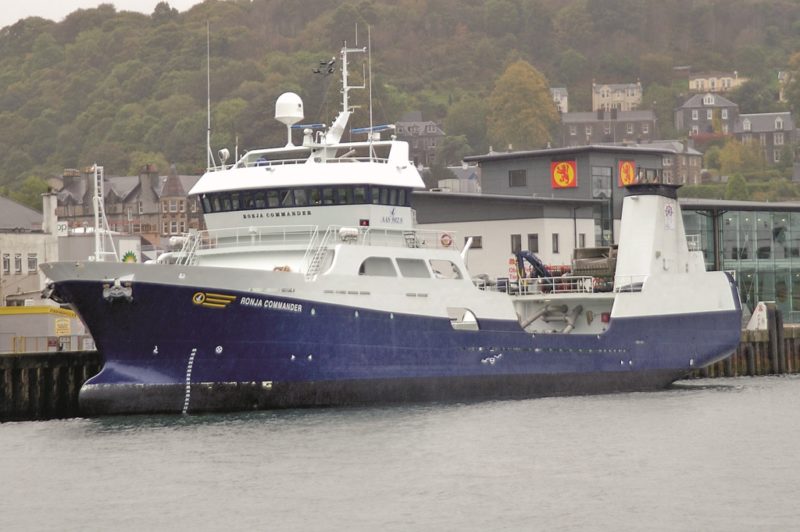
Robert the Bruce of Scotland (1274-1329), the Scottish national leader that fought Edward I and Edward II of England and defeated Edward II at the decisive Battle of Bannockburn in 1314, after having been crowned King of Scotland in 1306, has a connection with Clan MacDougall of Dunollie Castle. The MacDougall of this time married a daughter of Red Comyn of South West Scotland during the rise of Bruce, who slew Red Comyn, Lord of Badenoch and Lochaber and a competitor for the throne of Scotland, on 10th February 1306 on the high altar of Greyfriars’ Church at Dumfries, a church I know very well. The MacDougall tried by every possible means to avenge this murder of his father-in-law, and the Chief of the Clan MacDougall eventually defeated the Bruce in 1306 at Dalree near Tyndrum in Glen Lochy in Central Scotland.
The Bruce silver brooch studded with rare gems that secured the folds of the clothes of the Bruce fell into the hands of the MacDougalls and became an heirloom of the family. The precious brooch later fell into the hands of Campbell of Bragleen when Gylen Castle on Kerrara was sacked and burned in 1647. The brooch was restored to the Clan MacDougall in 1825, and is so precious that it has only been exhibited on a very few and rare occasions since. The brooch is said to have ‘shone like gold’ on the Scottish battlefields of those turbulent times. The Comyn family owned many castles including Inverlochy Castle built in 1280, and also a circular tall tower still standing and now part of the grounds of Dalswinton House, seven miles north of Dumfries. A full size wooden replica of the first double hulled paddle steamer built in Scotland in 1787 by Patrick Miller of Symington is also on display in the grounds of Dalswinton House.
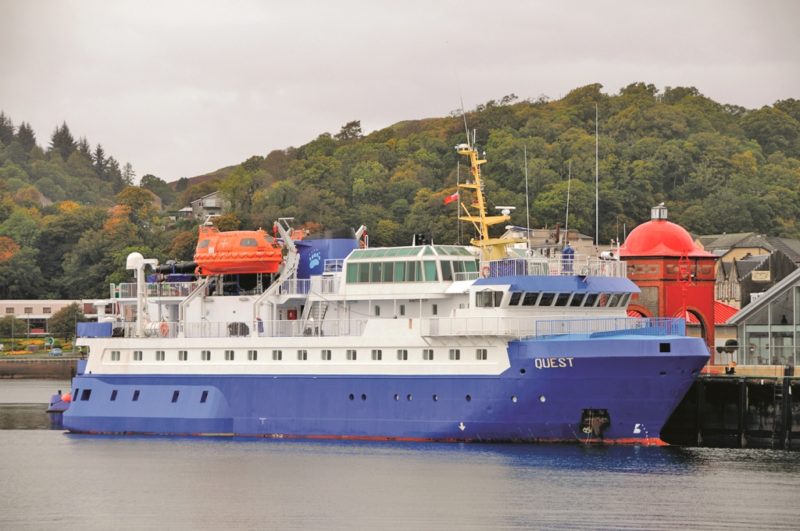
SHIPPING OF THE BAY OF OBAN DURING WORLD WAR II
In addition to the busy comings and goings of MacBrayne steamers, Oban Bay became very busy with coastal warships in 1940. On 6th February 1940, the Admiralty decided that Oban Bay should be used as an additional naval base to the Kyle of Lochalsh, which was a gathering point for North Atlantic convoys in addition to Loch Ewe further north near Ullapool. Merchant and Royal Navy ships used Oban as an important base in the Battle of the Atlantic.
The harbour was enclosed by boom defence nets, opened and closed by small boom defence vessels to allow Allied ships to pass through. The harbour was protected by anti submarine indicator loops placed on the seabed below the entrance of the boom defence nets, which detected the passage of a metal hull by magnetic induction and passed an electric signal to an Indicator Loop Station on Ganavan Headland, next to Ganavan Sands. The loops of cable had been placed in a rough rectangle several hundred yards in length by 60 yards wide. When a ship passed over the loop, a shore based galvanometer would indicate its presence by the movement to left or right of a central needle. When the shore spotters had seen that a friendly ship had arrived, all was well, but as all Allied submarines arrived in port on the surface, if the shore spotters observed no ship, then this must be a U-boat, which would be destroyed by depth charges. Scottish loop stations were also used at May Island, Loch Long, Rosyth and Cumbrae. The steam drifter Golden Gift of 89 grt built in 1910 was sunk in collision in Oban Bay on 6th April, 1943 while helping the war effort.
Ganavan Headland and the surrounding beach was surrounded by barbed wire fences during all of the war, with the Indicator Loop Station hidden in bushes and not visible from the road or to the general public. The Indicator Loop Station was a small brick built station building, but rendered with concrete for camouflage purposes, and still stands today on the headland. A military survey of the shallow waters at the northern end of Kerrara Island was conducted during the 1930s as a suitable base for flying boats to take off and attack U-boats in the Battle of the North Atlantic. RAF Coastal Command used the land at Ardantrive Bay on Kerrara as RAF Oban, flying Short Sunderland, Catalina and Saro Lerwick flying boats and aircraft. Several of these were damaged during take offs and landings with Oban Bay littered with their wreckage. Catalina VA729 went missing on 30th June 1943 from Oban, and Short Sunderland W4026 based at Oban crashed in bad weather near Dunbeath in Caithness on 25th August 1942 whilst transporting the Duke of Kent from Invergordon to Iceland, only the rear gunner survived.
American GI troops were stationed at Dunbeg to the north of Oban near Connel, and practised over and over amphibious troop landing training prior to the D-Day landings at Normandy on 6th June 1944. These were done at an operations base at Gallanach further down the coast and opposite Kerrara, with a dry dock for landing craft, a minefield control tower, a communications centre, and Nissan huts for their accommodation. The Oban War and Peace Museum located on the Esplanade just to the north of North Pier in the ground floor of what was previously the office of the Oban Times newspaper ran an exhibition in 1996 entitled ‘Oban at War’ to mark the 50th anniversary of the end of the war. The general public responded well with new material on the war effort in Oban Bay and this material was housed in the present building in 2006. Underwater telephone cables were laid in Oban Bay in 1956 as the terminus of the Transatlantic coaxial telephone TAT1 cable, thus continuing the underwater history of Oban Bay.
The cablelayer Monarch of 8,056 grt, launched in October 1945 and completed in February 1946 by Swan, Hunter & Wigham Richardson Ltd. at their Neptune yard on the Tyne, laid this cable from Clarenville (NFL), which came ashore in Gallanach Bay. This carried the ‘Hot Line’ between U.S. Presidents and U.S.S.R. General Secretaries during the Cold War.
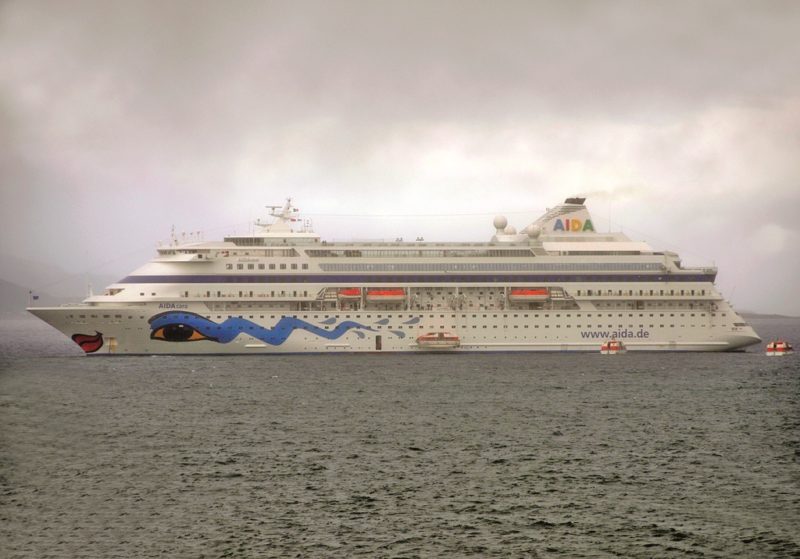
SHIPPING OF THE BAY OF OBAN DURING WORLD WAR II
In addition to the busy comings and goings of MacBrayne steamers, Oban Bay became very busy with coastal warships in 1940. On 6th February 1940, the Admiralty decided that Oban Bay should be used as an additional naval base to the Kyle of Lochalsh, which was a gathering point for North Atlantic convoys in addition to Loch Ewe further north near Ullapool. Merchant and Royal Navy ships used Oban as an important base in the Battle of the Atlantic.
The harbour was enclosed by boom defence nets, opened and closed by small boom defence vessels to allow Allied ships to pass through. The harbour was protected by anti submarine indicator loops placed on the seabed below the entrance of the boom defence nets, which detected the passage of a metal hull by magnetic induction and passed an electric signal to an Indicator Loop Station on Ganavan Headland, next to Ganavan Sands. The loops of cable had been placed in a rough rectangle several hundred yards in length by 60 yards wide. When a ship passed over the loop, a shore based galvanometer would indicate its presence by the movement to left or right of a central needle. When the shore spotters had seen that a friendly ship had arrived, all was well, but as all Allied submarines arrived in port on the surface, if the shore spotters observed no ship, then this must be a U-boat, which would be destroyed by depth charges. Scottish loop stations were also used at May Island, Loch Long, Rosyth and Cumbrae. The steam drifter Golden Gift of 89 grt built in 1910 was sunk in collision in Oban Bay on 6th April, 1943 while helping the war effort.
Ganavan Headland and the surrounding beach was surrounded by barbed wire fences during all of the war, with the Indicator Loop Station hidden in bushes and not visible from the road or to the general public. The Indicator Loop Station was a small brick built station building, but rendered with concrete for camouflage purposes, and still stands today on the headland. A military survey of the shallow waters at the northern end of Kerrara Island was conducted during the 1930s as a suitable base for flying boats to take off and attack U-boats in the Battle of the North Atlantic. RAF Coastal Command used the land at Ardantrive Bay on Kerrara as RAF Oban, flying Short Sunderland, Catalina and Saro Lerwick flying boats and aircraft. Several of these were damaged during take offs and landings with Oban Bay littered with their wreckage. Catalina VA729 went missing on 30th June 1943 from Oban, and Short Sunderland W4026 based at Oban crashed in bad weather near Dunbeath in Caithness on 25th August 1942 whilst transporting the Duke of Kent from Invergordon to Iceland, only the rear gunner survived.
American GI troops were stationed at Dunbeg to the north of Oban near Connel, and practised over and over amphibious troop landing training prior to the D-Day landings at Normandy on 6th June 1944. These were done at an operations base at Gallanach further down the coast and opposite Kerrara, with a dry dock for landing craft, a minefield control tower, a communications centre, and Nissan huts for their accommodation. The Oban War and Peace Museum located on the Esplanade just to the north of North Pier in the ground floor of what was previously the office of the Oban Times newspaper ran an exhibition in 1996 entitled ‘Oban at War’ to mark the 50th anniversary of the end of the war. The general public responded well with new material on the war effort in Oban Bay and this material was housed in the present building in 2006. Underwater telephone cables were laid in Oban Bay in 1956 as the terminus of the Transatlantic coaxial telephone TAT1 cable, thus continuing the underwater history of Oban Bay.
The cablelayer Monarch of 8,056 grt, launched in October 1945 and completed in February 1946 by Swan, Hunter & Wigham Richardson Ltd. at their Neptune yard on the Tyne, laid this cable from Clarenville (NFL), which came ashore in Gallanach Bay. This carried the ‘Hot Line’ between U.S. Presidents and U.S.S.R. General Secretaries during the Cold War.
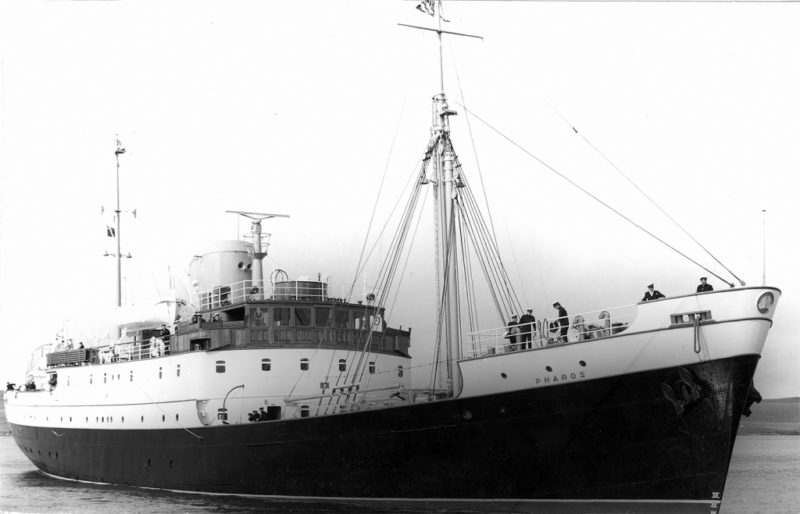
GLENLIGHT SHIPPING and GREAT GLEN SHIPPING
Clyde ‘puffers’ and ‘VIC’ wartime lighters were engaged in the trade of coal, timber, and supplies to small ports on the Western coasts and isles of Scotland for 150 years. Chindit was the last Clyde ‘puffer’ to be completed in 1946 by the Kirkintilloch yard of J. Hay & Sons Ltd., but she was broken up in 1960 after stranding. Glenlight Shipping Ltd. was formed in 1968 by Ross & Marshall Ltd. and Hay Hamilton Ltd., both of Greenock. The company used coasters of up to 199 grt and 400 dwt as well as Clyde ‘puffers’ and ‘VIC’ wartime lighters, which often took the ground or beach at low tide to unload their cargoes. By 1974, the company owned six small vessels in Glencloy, Glenfyne, Dawnlight, Raylight, Anzac, and Pibroch, the latter having replaced Spartan (2) and Lady Morvern. The original Clyde ‘puffer’ Spartan had blown up and sank off Lismore near Oban on 31st May 1946 whilst on Government service. Glenlight Shipping then purchased four larger coasters of 199 grt and 400 dwt in 1974 from Eggar Forester Ltd, London and renamed them as Glen Etive (ex Wib), Glen Rosa (ex Wilks), Sealight (ex Wis) and Polarlight (ex Wiggs), but trade inexorably declined and the last coaster was laid up at Greenock in December 1994.
Great Glen Shipping Company of Corpach to north of Fort William was formed in January 2010 to trade on the Caledonian Canal with timber from small piers on the West Coast of Scotland to Inverness. The small coasters Isis and Burhou of 900 dwt were operated between 2011 and 2018 with cargoes of timber, granite chips and aggregates.
The company at present operates three coasters loading aggregates at Bonawe Quarry near Connel in Ceg Universe (ex Dan Fighter) of 1,260 dwt and built in 1988, Ceg Galaxy (ex Frifjord) of 1,300 dwt and built in 1986, and Ceg Cosmos of 1,370 dwt built in 1983 with a self loading and discharging crane. Ceg Galaxy was towed off Kerrara to a safer anchorage on 12th January 2020 by the Oban lifeboat after her engine had failed and both of her anchors were dragging and taking her very close to the Kerrara shore.
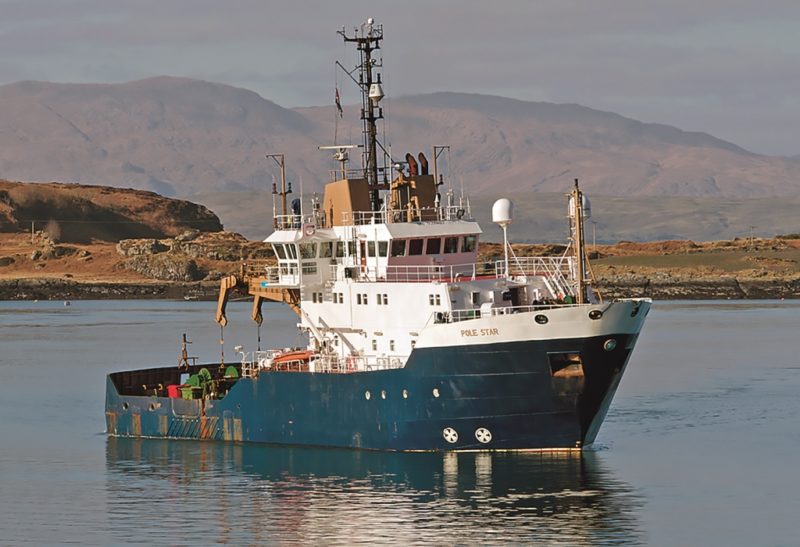
CRUISE SHIPS
Smaller cruise ships such as the beautiful clipper bowed Stella Polaris of 5,056 grt, built in the Gotaverken yard at Gothenburg, ran her first cruise in February 1927 for Bergen Line for Norwegian North Cape, Western Isles of Scotland and worldwide cruises, and was able to anchor safely in Oban Bay.
Visiting cruise ships, unless they are of sufficiently small length to berth at the North Pier, usually anchor offshore from Kerrara, with their passengers tendered to shore at the North Pier. The cruise ship Serenissima of 2,598 grt ran aground and became lodged on gravel and sand on 20th May 2013, she refloated herself and was towed into Oban harbour with divers reporting she was undamaged and continued her cruise the next day. She is the former Hurtigruten express passenger ship Harald Jarl built in 1960.
Cruise passengers arrive at Oban to undertake shore excursions e.g. to the beautiful Arduaine Gardens, Ardmaddy Castle Gardens or Inverawe Castle. The ruins of Dunadd Castle in Kilmartin Glen near Loch Awe, one of the most beautiful lochs in Scotland, can be visited to view a weathered rock that marks the site where Scottish Kings were crowned until the 11th century. The Port of Oban employs trained walking tour guides based at the new Harbour Building on the North Pier to accompany and describe walking tours of Oban. Oban Whisky Distillery on Stafford Street is a required stop for malt whisky lovers, with the distillery founded in 1794 and is thus older than the town of Oban, which was officially founded in 1811 and celebrated its 200th year anniversary in 2011. Water is sourced from two lochs in Ardconnel, and two stills produce 800,000 litres of whisky per year. Samples for tasting and bottles for purchase of the famous 14 year old Oban Malt Whisky are available at the Distillery.
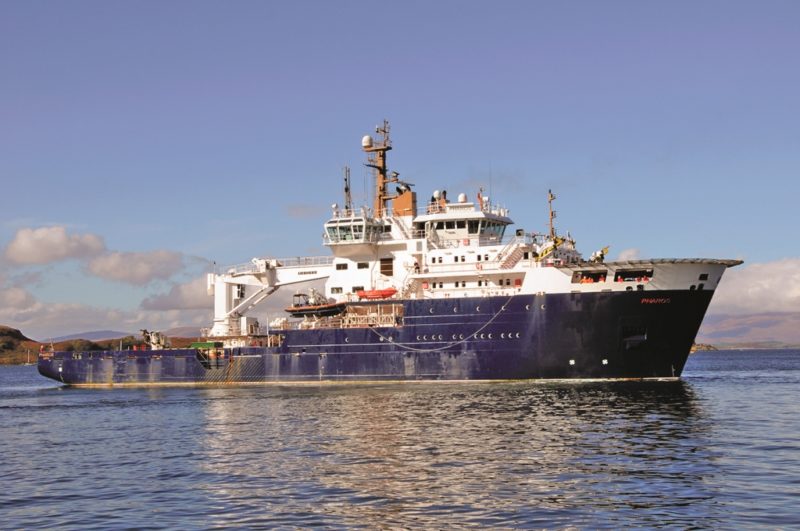
The former CALMAC ferry Columba of 2,104 grt was built by Hall, Russell at Aberdeen in 1964, and after 25 years of service she was sold to Leisure Marine Holdings and converted into the luxury cruise ship Hebridean Princess. She is maintained in excellent condition and is now operated from the North Pier by Hebridean Cruises and has sometimes been used as the Royal Yacht.
Majestic Cruise Line has four very small cruise ships, with two converted from fishing boats in 2003 and turned into small cruise ships with six double or twin ensuite cabins and renamed Glen Massan and Glen Tarsan. Two purpose built very similar sized vessels followed in 2016 and 2019 from the Ardmaleish Boatbuilding Yard on the Isle of Bute with seven double or twin ensuite cabins and named Glen Etive and Glen Shiel. Majestic Line cruises almost always depart from Oban and offer eighteen different cruise itineraries over 3, 6 or 10 nights.
Lord of the Glens is a very streamlined luxury motor yacht that is seen at Oban for regular cruises of the Caledonian Canal to Inverness. She fits the maximum dimensions of the 36 locks on the canal of length 150 feet, beam of 34 feet, and depth of 12 feet, and has 27 outward facing luxury cabins and a wealth of artistic treasures onboard to suit the discerning traveller.
Live fish carriers arrive at Oban regularly with fish for processing and onward transport by road. The blue hulled fish carriers Havilah of 742 grt and built at Whitby in 1999, and Havgull of 103 grt and length 25 metres with a beam of 7 metres are frequent visitors to Oban. Havgull was built in 1969 as Aureben and took the name of Havgull in 2003. There are several other fish carriers arriving in Oban, including Ocean Aquila (ex Ronja Skye) of 497 grt, Aqua Scotia of 296 grt, Viking Saga of 500 dwt, and Simon Princess of 501 grt, the latter a salmon delousing vessel to keep the farmed salmon disease free. The vessel Helen Rice is a fishfarm support vessel and workboat, and Laxi II of 100 grt is a multi role workboat built by Ferguson Marine at Port Glasgow in Millennium year. The fishing boat Flying Fish TT272 of 35 metres in length from Tarbert, Loch Fyne sank in Oban Harbour on 18th April 2019, with a cordon placed around the wreck to avoid pollution. Six or more fishing boats land their catches every day at Oban South Quay. Fresh fish is thus always available at the many fish and chips shops in Oban town.
The Port of Oban is a Trust Port owned by Argyll and Bute Council with an office at Kilbowie House, Gallanch Road in Oban, and located at position 56°25′ North, 5°28′ West. The Harbourmaster offers continuous weather and navigation reports for departing yachtsmen e.g. the St. Hilda Sea Adventures based at Dunstaffnage Marina near Connel, which offers unique sailing holidays for beginners and experienced small groups. There are four anchorages at Oban for vessels above 24 metres in length, with only one recommended for large cruise ships. Anchoring is not permitted on designated ferry approach routes, nor between the North Pier and the Corran Ledge. There are five berths in the port, the North Pier, South Quay for fishing vessels to unload their catches, the twin CALMAC Linkspan Ferry Berths, and the Northern Lighthouse Board Wharf.
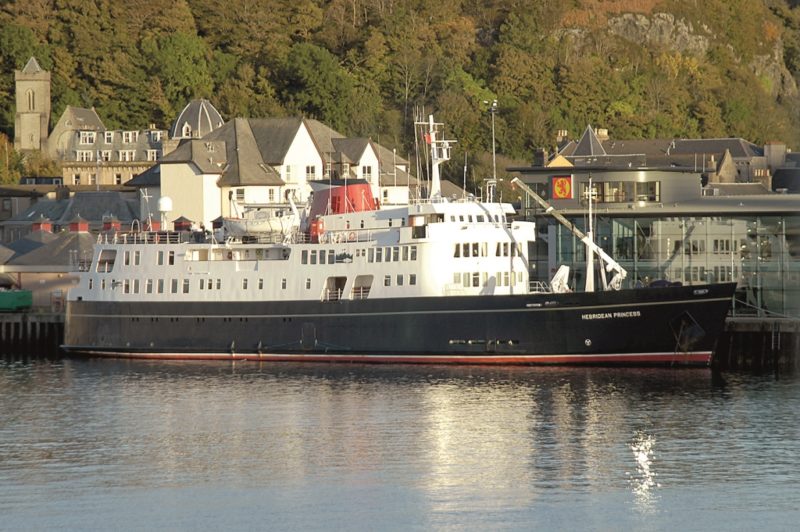

THE SHIPS OF THE NORTHERN LIGHTHOUSE BOARD
PHAROS (4) Iron paddle steamer of 270 grt.
1846 Built by William Fairbairn & Son, Millwall, London and based at Leith.
1861 Sold for commercial service.
1864 Lengthened by 28 feet to 171.6 feet, now 328 grt.
1866 Sold to the Aberdeen, Newcastle & Hull Steam Co. Ltd.
1877 Broken up at Barrow.
PHAROS (5) Iron paddle steamer of 524 grt.
1854 Completed by Tod & McGregor, Meadowside yard, Glasgow.
1874 Sold for commercial service and renamed Valetta in 1875 prior to conversion to a sailing barque.
1887 Sank off the Tuskar Rock in the Irish Sea after a collision with the Glasgow tug Flying Serpent.
TERRIBLE Iron paddle steamer of 181 grt.
1865 Built by Hepple & Company, North Shields for Joseph Osten of North Shields.
1869 Purchased by NLB and based at Obana.
1881 Broke from her moorings in Erraid Sound, Mull and driven ashore to become a total loss.
PHAROS (6) Iron twin funnelled paddle steamer of 574 grt.
1874 Built by Robert Napier & Sons in Glasgow.
1911 Sold to Samuel Galbraith of Glasgow, and used as an accommodation ship on the Clyde.
1915 Royal Navy accommodation ship at Loch Ewe.
1920 Sold to Burntisland Shipbuilding Company for use as an accommodation ship 1923 Broken up at Grangemouth.
SIGNAL Steel paddle steamer of 345 grt.
1883 Built by Caird & Company, Greenock and based at Oban.
28/9/1895 Wrecked on the Mull of Kintyre while on a voyage from Greenock to Oban.
POLE STAR Steel twin screw steamer of 459 grt.
1892 Built by Fairfield Shipbuilding & Engineering Co. Ltd, Govan and based at Stromness.
1931 Sold for commercial service particularly in the Middle East for various owners.
1951 Broken up at La Spezia.
HESPERUS Steel twin screw steamer of 584 grt.
1896 Built by Gourlay Brothers & Company, Dundee and based at Oban.
1940 Broken up by Clayton & Davie Ltd. at Dunston on Tyne.
MAY Steel twin screw steamer of 242 grt.
1899 Built by Hawthorns & Co. Ltd, Leith and based at Granton.
1937 Broken up at Bo’ness by P. & W. McLellan.
PHAROS (7) Steel twin screw steamer of 921 grt.
1909 Built by William Beardmore & Co. Ltd, Glasgow.
1955 Broken up at Charlestown, Fife by Shipbreaking Industries Ltd.
POLE STAR (2) Steel twin screw steamer of 750 grt.
1930 Built by William Beardmore & Co. Ltd, Glasgow, last ship built at the Dalmuir yard.
1961 Renamed May to release her name for a new ship, based at Granton.
1965 Broken up at Glasgow by P. & W. McLellan.
MAY (2) Steel twin screw motor vessel of 491 grt.
1937 Built by A. & J. Inglis Ltd. at Pointhouse yard in Glasgow, based at Granton.
1963 Sold for oil and gas operations renamed Surveyor.
1977 Broken up at Bo’ness by P. & W. McLellan.
HESPERUS (2) Steel twin screw motor vessel of 844 grt.
1939 Built by Caledon Shipbuilding & Engineering Co. Ltd, Dundee, based at Oban.
1974 Sold for commercial service.
1985 Broken up on the Medway.
PHAROS (8) Steel twin screw motor vessel of 1,712 grt.
1955 Built by Caledon Shipbuilding & Engineering Co. Ltd., Dundee, based at Granton.
1963 Severely damaged by fire in dry dock at Troon.
1958 Sold to Windjammer Cruises, Bahamas for cruising as Orient Express with 80 pax capacity.
1988 Sold on to Amazing Grace S.A. and renamed Amazing Grace with 94 pax capacity.
2021 Still in service, registered at Port of Spain (Trinidad).
POLE STAR (3) Steel twin screw motor vessel of 1,328 grt.
1961 Built by Caledon Shipbuilding & Engineering Co. Ltd, Dundee, based at Stromness.
1993 Sold for commercial service at San Lorenzo (Honduras) renamed Rogue.
1995 Suffered severe hurricane damage at Port of Spain (Trinidad).
1998 Whilst being pulled up a slipway at Port of Spain for repairs, she slipped out of her cradle after it buckled under the strain and collapsed, total loss.
FINGAL Steel twin screw motor vessel of 1,342 grt.
1964 Completed by Blythswood Shipbuilding Co. Ltd. as the last ship from the Dalmuir yard.
2000 Sold to Tamahine Investments Ltd. renamed Windsor Castle.
2014 Purchased by Royal Yacht Britannia Ltd. and converted into a 25 bedroom luxury hotel, renamed Fingal in 2016.
PHAROS (9) Steel ship with twin screw diesel electric propulsion, 1,986 grt.
1993 Completed by Ferguson Shipbuilding Ltd, Port Glasgow, based at Oban.
8/9/2006 Sold to Byron Marine Ltd., Falkland Islands as a fishery patrol and logistics support vessel.
POLE STAR (4) Steel ship with diesel electric propulsion, 1,174 grt.
2000 Completed by Ferguson Shipbuilding Ltd., Port Glasgow, buoy working deck of 200 square metres, 12 tonne crane lifting capacity, dynamic positioning system, two azimuth thrusters and two bow thrusters. Still in service.
PHAROS (10) Steel ship with diesel electric propulsion, 3,672 grt.
2007 Completed by Gdansk Stoczia Remontowa, based at Oban, aft buoy crane capacity of 30 tonnes, dynamic positioning system, forward helicopter deck, large aft working deck. Still in service.
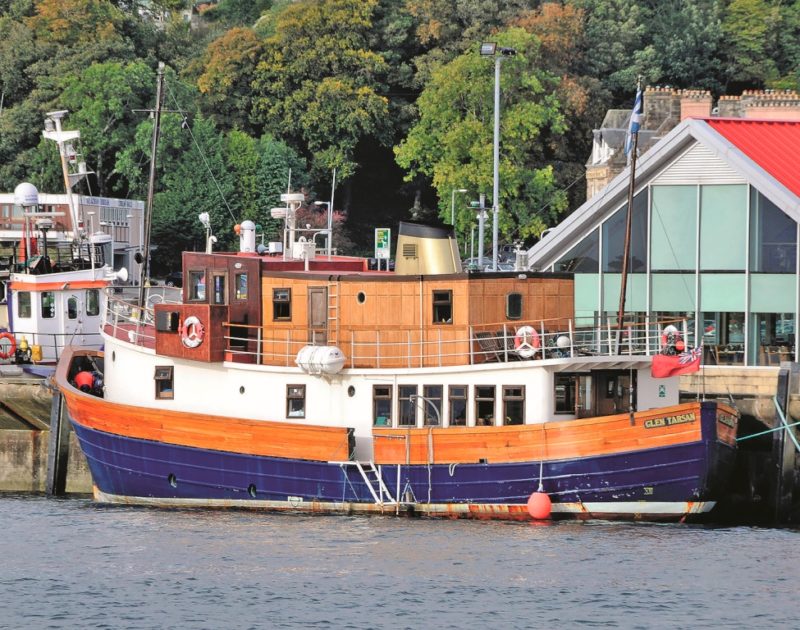

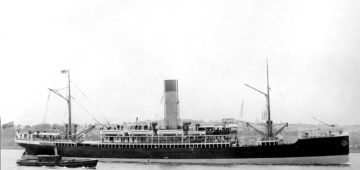



Comments
Sorry, comments are closed for this item